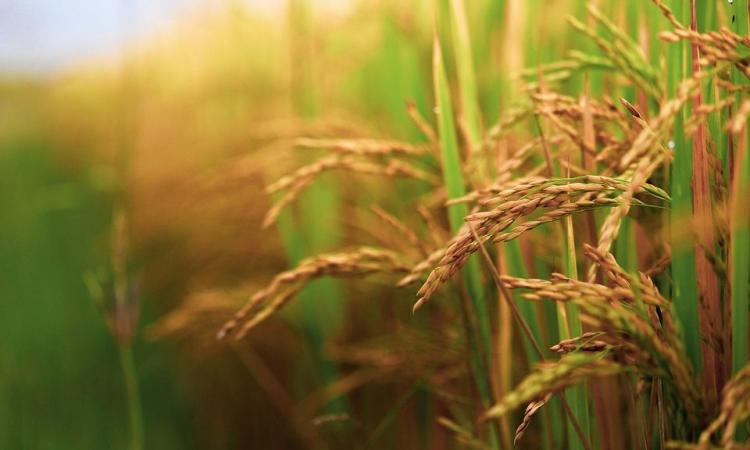
Arsenic exposure, mainly through contaminated groundwater used for drinking, has widely been associated with detrimental health effects (Rahman et al., 2009). Though arsenic exposure affects more than 200 million people worldwide (Shakoor et al., 2017), it has emerged as a major public health concern in Bangladesh and India, over the last few decades (Chakraborti et al., 2015).
It is now well-established that not just drinking water, but irrigation water contaminated with arsenic is an important source of human arsenic exposure through water-soil-rice transfer.
The World Health Organization (WHO) has established a guideline value of 10 μg L−1 for arsenic in drinking water. Although contaminated irrigation water also contributes to arsenic exposure by enhancing arsenic concentrations in food crops (Mandal et al., 2019; Bhattacharyya et al., 2021), no WHO or international guideline value for irrigation water has been established to date.
Rice, a staple food in India and Bangladesh, may also be a major route of arsenic exposure (Mondal and Polya, 2008; Mondal et al., 2010; Mondal et al., 2020). Rice plants are major accumulators of arsenic compared to other cereal crops (Williams et al., 2007) and irrigation of a paddy field with arsenic-contaminated water elevates arsenic concentrations in paddy soil (Meharg and Rahman, 2003), rice straw, and grain (Panaullah et al., 2008). Soil serves as a significant sink for arsenic, which is highly bioavailable to rice roots under the conditions in which rice is cultivated (Kumarathilaka et al., 2018).
A recent paper by Mandal et al ‘Meta-Analysis Enables Prediction of the Maximum Permissible Arsenic Concentration in Asian Paddy Soil’ in Front. Environ. Sci. attempts to establish paddy soil and irrigation water arsenic concentrations above which the maximum recommended concentrations in rice may be exceeded.
While drinking water arsenic has a permissible, or guideline value, quantification of guideline values for soil and irrigation water is limited.
Arsenic intake from rice has become a global concern, hence different countries have set maximum tolerable concentrations of arsenic in rice grain (Schmidt, 2015). The Joint FAO-WHO Codex Alimentarius Commission has recommended a maximum concentration of 0.2 mg kg−1 for inorganic arsenic in polished rice and 0.35 mg kg−1 in husked rice (Codex Alimentarius Commission, 2017).
The usual range of total arsenic in uncontaminated soil is 0.1–10 mg kg−1 (Zhao et al., 2010). The European Union (EU) recommended that arsenic in agricultural soil should not exceed 20 mg kg−1 (Rahman et al., 2007; Rahaman et al., 2013; Hussain et al., 2021). For irrigation water, a regulatory limit of 100 μg L−1 for arsenic has been adopted (Food and Agriculture Organization FAO, 1992; Pescod, 1992). This is in line with the 100 μg L−1 maximum concentration recommended by Ayers and Westcot (1985) for trace elements in irrigation waters but is again focused on generic agricultural production rather than rice specifically.
To our knowledge, no previous studies have derived maximum tolerable concentrations of paddy soil and irrigation water arsenic above which rice grain arsenic may exceed the maximum allowable concentrations set by the Joint FAO-WHO Codex Alimentarius Commission (JECFA, 2017). Using a meta-analysis approach, we attempt to determine soil and irrigation water arsenic concentrations above which rice grains cultivated in Asian paddy fields may exceed the maximum tolerable concentrations of 0.2 mg kg−1 for inorganic arsenic in polished rice and 0.35 mg kg−1 in husked rice.
From the 156 papers reviewed, only 26 studies (15 from India, 1 from Taiwan, 1 from Nepal, 1 from Vietnam, 1 from China and 7 from Bangladesh) met the inclusion criteria for the meta-analysis; these studies all reported t-As concentrations in rice grain, soil, and irrigation water.
Using published data from these 26 field studies (not pot-based experiments) from Asia, each of which reported irrigation water, soil and rice grain arsenic concentrations from the same site, this meta-analysis quantitatively evaluated the relationship between soil and irrigation water arsenic concentrations and the arsenic concentration in the rice grain.
A generalized linear regression model revealed arsenic in the soil to be a stronger predictor of arsenic in rice than arsenic in irrigation water (beta of 16.72 and 0.6, respectively, p < 0.01). Based on the better performing decision tree model, using soil and irrigation water arsenic as independent variables we determined that Asian paddy soil arsenic concentrations greater than 14 mg kg−1 may result in rice grains exceeding the Codex recommended maximum allowable inorganic arsenic (i-As) concentrations of 0.2 mg kg−1 for polished rice and 0.35 mg kg−1 for husked rice.
Both logistic regression and decision tree models, identified soil arsenic as the main determining factor and irrigation water to be a non-significant factor, preventing the determination of any guideline value for irrigation water. The seemingly non-significant contribution of irrigation water in predicting grain i-As concentrations below or above the Codex recommendation may be due to the complexity in the relationship between irrigation water arsenic and rice grains.
Despite modelling limitations and heterogeneity in meta-data, our findings can inform the maximum permissible arsenic concentrations in Asian paddy soil.
The non-significant contribution of irrigation water was unsurprising, given that the arsenic accumulation in soil due to contaminated irrigation water depends on several factors and the relationships governing transfer to rice grains are complex.
Considering uncertainties and limitations of the available metadata and models, experimental studies collecting more appropriate soil and irrigation water samples along with grain rice, and analysis of soil available arsenic, rather than total arsenic in paddy soil, is warranted to validate these findings.
The full paper can be accessed here while the supplementary material can be accessed here
/articles/soil-arsenic-above-14-mgkg-can-cause-rice-be-unsafe-consumption